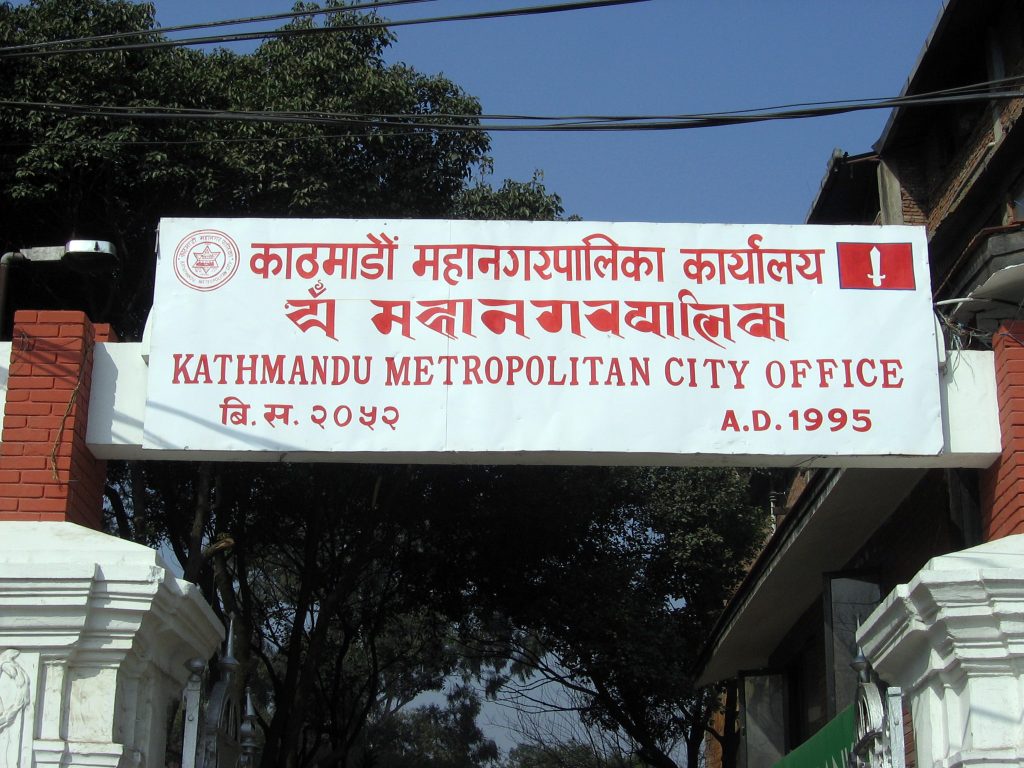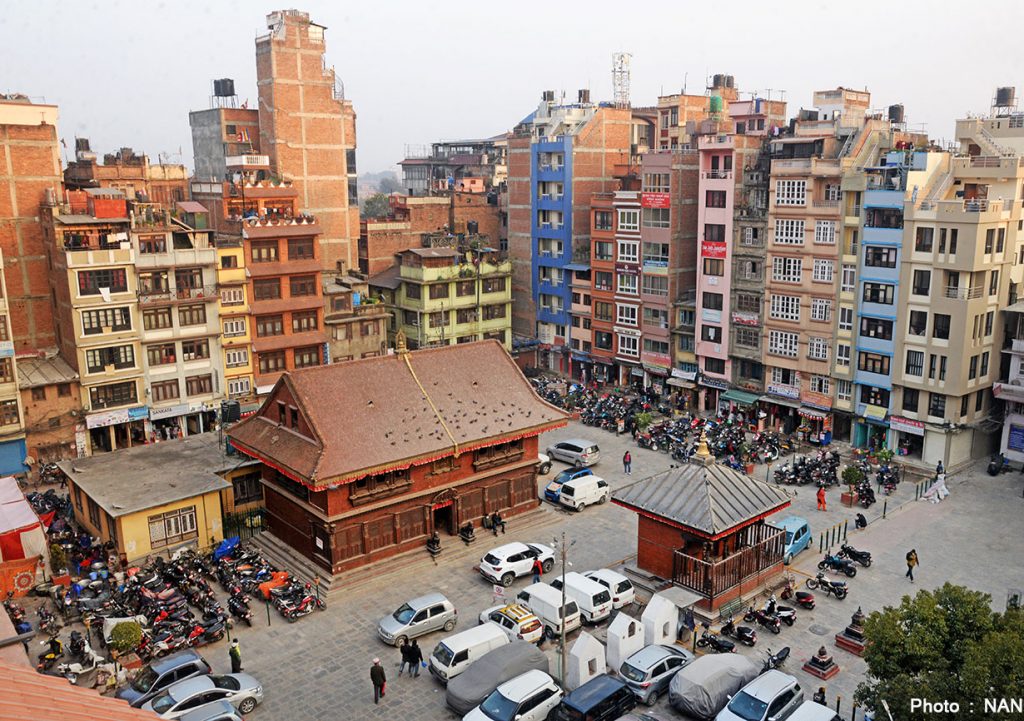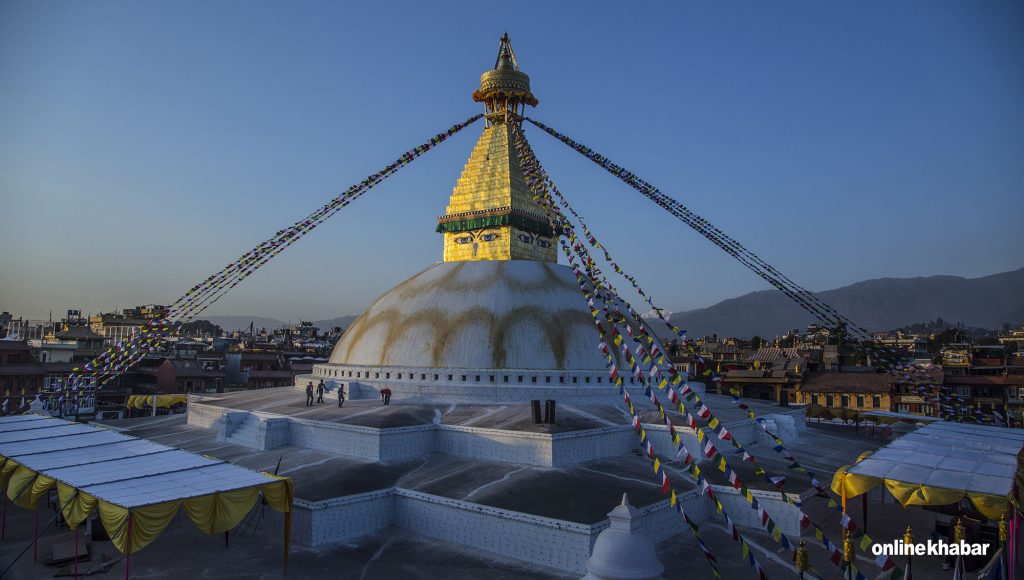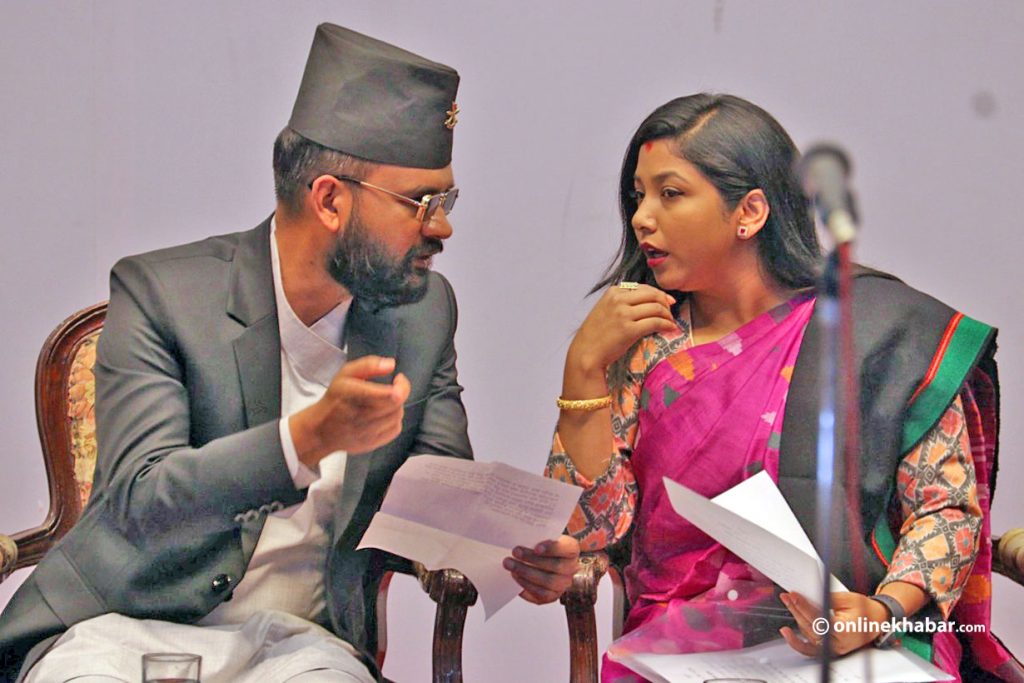
Kathmandu metropolitan city, on December 16, turned 28 years old as a local government. Speaking at the foundation day programme held by the city, newly elected lawmaker Sobita Gautam said how the city had lost its originality and its cultural heritage in the last 27 years.
“We need to work together to revive the city to its old glory,” she said.
The city government has a major role in preserving the city’s natural and cultural heritage more than any other governmental body. But, over the past century, the city’s lack of impetus has failed to preserve the city’s heritage.
The city’s identity in crisis

As the metropolis has failed to create and implement heritage-friendly building standards, the original form of houses is disappearing. Architects and cultural heritage experts say that if they were to prepare a list of things the city should have done but did not do, it would be a long one.
Rather than ensuring the city’s identity is preserved, the city government has helped businesses to encroach on land that the people had preserved for years. This trend continues today as various historical monument and land is being encroached on to build modern building all in the name of development. The central government is just as at fault as the local government, experts say.
Recently, the locals seem aware of the need to conserve the city’s heritage, which was not the case a decade or two ago. But that said, the local government has done a few things that have undermined the work of the locals.
The first was the destruction of the Tukucha tunnel, which was built over a century ago. Mayor Balen Shah, with an aim to stop the encroachment of the river, destroyed the old tunnel which was frowned upon by cultural heritage activists and locals. There are other plans of the local government that also gives hints if the city government really wants to work towards the conservation and preservation of the cultural heritage sites of the city or otherwise.
Kathmandu is considered to be more than 2,000 years old. The architecture of the city including the metal, stone and woodwork, is considered extraordinary. The city’s old culture and craftsmanship have made it one of the best sightseeing destinations in the world. Sites like Swayambhunath, Bouddhanath, Pashupatinath, Hanumandhoka, Patan and Bhaktapur durbar squares are all on the UNESCO World Heritage List. But, the recent work being done by the local government around these areas are not heritage-friendly, many argue.
Read also: How bahaas of Kathmandu are losing their appeal
City government’s incapability

It seems that the metropolis has failed in keeping the life of the inner city intact. Not only has it failed to preserve old houses, but it has also not encouraged to people build new houses in traditional styles. Experts say that the latest plan to create a modern parking lot inside Khulamanch preserved by the people shows how careless the metropolis is in preserving the originality of the city.
Bishnu Raj Karki, the former director general of the Department of Archeology expresses his concern that the city of Kathmandu is losing its cultural heritage, which was its identity.
He says many mistakes were made by the metropolis during the reconstruction of the heritage after the 2015 earthquake. Turning Ranipokhari into a swimming pool, changing the idols of Kastamandap, using concrete to rebuild old cultural heritage monuments and demolishing ancient Baghdurbar are a few decisions that were heavily criticised.
As the former mayors of the city failed to come up with plans to save old monuments, the city has failed to preserve private houses and government-owned buildings that are over a century old.
The metropolis could not stop the Nepal Army from demolishing the over 100-year-old Tri-Chandra Military Hospital building. Similarly, it also failed to stop people from demolishing old houses on the side of the Bouddhanath stupa to build new concrete buildings questioning if the place can be called cultural heritage anymore.
After that, large structures that were against the standards started to appear in the vicinity. In this, the metropolis became only an ally. Heritage experts express concern that the Bouddhanath stupa is surrounded by a concrete jungle.
The government regulations had put a 500-metre radius around the stupa announcing it as a protected area. That was later narrowed down to the circumference of the stupa in 2006. This gave rise to rapid construction outside the stupa, which is now full of high-rise buildings around.
This is just one of a few examples in which the city government failed to protect its cultural heritage. Experts say unless the city intervenes and stamps its authority to protect the city’s heritage monuments, all of them will be under threat in the coming years.
“They’ve destroyed so many things it’s heartbreaking,” says Karki. “We’ve lost a lot of heritage monuments in the core city. If we don’t do anything, we’ll lose more.”
Lack of awareness and publicity

Although the Kathmandu metropolitan city introduced a policy of giving subsidies up to Rs 3.2 million for people building traditional houses around the core city, lack of awareness and publicity meant the project failed drastically.
Archaeologist Sudarshan Raj Tiwari says that the originality of Kathmandu city is being robbed as roads and other physical structures are being constructed in the name of urbanisation and development.
He says various old structures like choks (squares), hitis (stone sprouts), patis (resting places) and phalchas were demolished in the name of road expansion. He also blames the central government for turning a blind eye and allowing the local governments to destroy the cultural heritage of the city. Tiwari is worried that tangible and intangible heritage and cultural protection are not included in Nepal’s development definition.
“There are more examples of tangible and intangible heritage and culture in the inner city of Kathmandu”, he says, “However, in the eyes of the metropolis, the inner city and the outer city are the same. It seems that they are trying to develop the city according to that vision.”
In Tiwari’s assessment, those who come to the Kathmandu metropolis as people’s representatives understand that development means creating modern physical infrastructure. In their vision, Kathmandu is a modern city like New York or Tokyo where there is no lively continuity of ancient art, culture and style.
“This is why it is becoming difficult to preserve cultural heritage in the city,” says Tiwari.
He says that there are a lot of talks and little work in the name of heritage conservation.
“Though public awareness has increased that heritage should be saved, attention is being paid only to jatras (festivals) and other cultural activities which are not enough,” says Tiwari.
Karki, the former director general of the Department of Archeology, says that one cannot be modern if the original identity is lost in the name of modernity.
“We don’t know if they (KMC) have researched all the cultural heritage of the city and kept a record and encouraged the city dwellers to preserve the originality,” he says.
According to him, the city’s architecture, old roads, houses, and palaces are all archaeological and cultural heritage. The main body responsible for protecting them is the metropolis.
“The new mayor showed interest in Kumari Jatra”, Karki says, “After that, he and the government spent time bulldozing things here and there.”
Same old leadership style

Karki says that every time there is a change of leadership in the metropolis, there is hope that the city will return to its original identity.
“However, the working procedure has never changed,” he says.
Kathmandu Mayor Balen Shah always praises the Newa community and its contribution to the city. He reiterated his commitment during the 28th-anniversary programme of the metropolis. Mayor Shah told the plans for the reconstruction of historical phalchas, restoration of dabalis, and branding of festivals. However, so far, he has not implemented these plans.
The Department of Archeology and the Supreme Court has stopped his insistence on destroying the century-old tunnel built over the Tukucha river, which has now been confirmed as a part of cultural heritage. The area where he has bulldozed is yet to be repaired.
Mayor Shah’s plan to build an underground parking lot at Khulamanch has also come under intense controversy. There is criticism that even the remaining 0.4 per cent of open space in Kathmandu for normal citizens is going to be encroached upon thanks to the city government.
Urban planner Pitambar Sharma says that the city should not be left dead in the name of development.
“Kathmandu is a city built for pedestrians, it should be kept alive and pedestrian facilities should be promoted,” he says. “Don’t forget.”
This story was translated from the original Nepali version and edited for clarity and length.

























